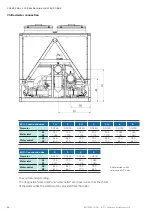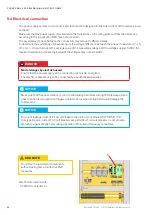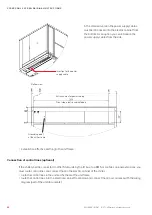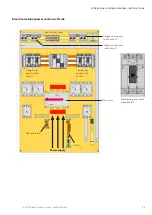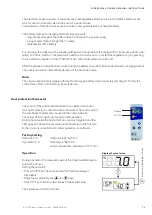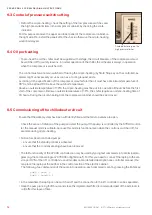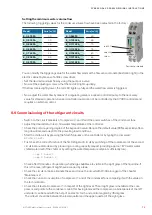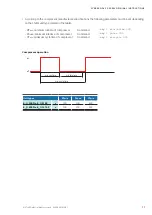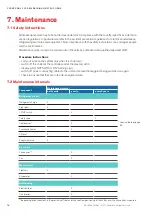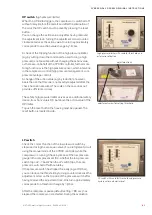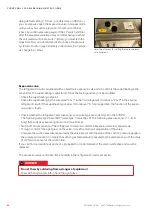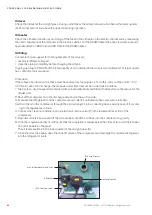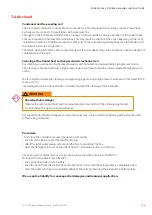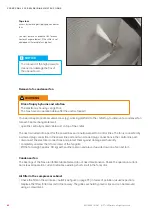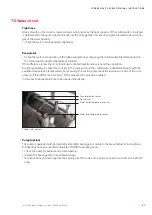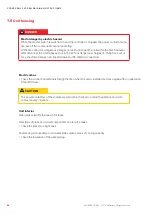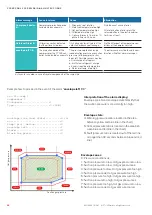
76
EN/09.2019/G41 © STULZ GmbH – all rights reserved
cybercool 2 screw original insTrUcTions
• Connect pressure gauges on the high pressure and low
pressure side and verify by reading the pressures, that the
saturation temperatures for evaporation (low pressure side)
and condensation (high pressure side), which correspond to
the measured pressures, are within the following tolerances
during the operation.
High pressure side: max. 18 K above the air intake tempera-
ture of the condenser
Low pressure side: 3 to 7 K beneath the chilled water flow
temperature
Example:
measured on the high pressure side: 13 bar (rel.) (= 14 bar
abs.) corresponding saturation temperature at the dew point
according to scale for R134a: 52.5°C
measured air intake temperature at the condenser: 35°C
t
cond
- t
air
= 52.5°C - 35°C = 17.5 K ---> ok
measured on the low pressure side: 2.5 bar (rel.) (= 3.5 bar
abs.) corresponding saturation temperature at the dew point
according to scale for R134a: 5.0°C
measured flow water temperature at the evaporator outlet:
12°C
t
flow
- t
evap.
= 12°C - 5.0°C = 7 K ---> ok
• Switch off the manual mode for all components.
• Instruct the operational staff of the controller manipulation (refer to the C7000 controller manual).
comp 2 hand 0
handoff
comp 1 hand 1
comp 1 handon 0
• Now switch off the compressors of the first refrigerant circuit by manual mode.
• Check the correct function of the second refrigerant circuit by switching off the manual mode for compres
-
sor 2 and by producing a cooling capacity request (providing approx. 18°C warm water chilled water inlet of
the chiller or by setting the water temperature setpoint sufficiently low).
Compressor 2 will now be started by automatic operation of the C7000 controller.
• Perform the same checks as for the first refrigerant circuit.
High pressure gauge
Low pressure gauge
If the tolerances (18 K at the condenser, 7 K at the evaporator) are exceeded, there is a problem of heat trans-
mission. The probable cause is the pollution of the heat exchanger surfaces. Also the superheating may be set
too high.

